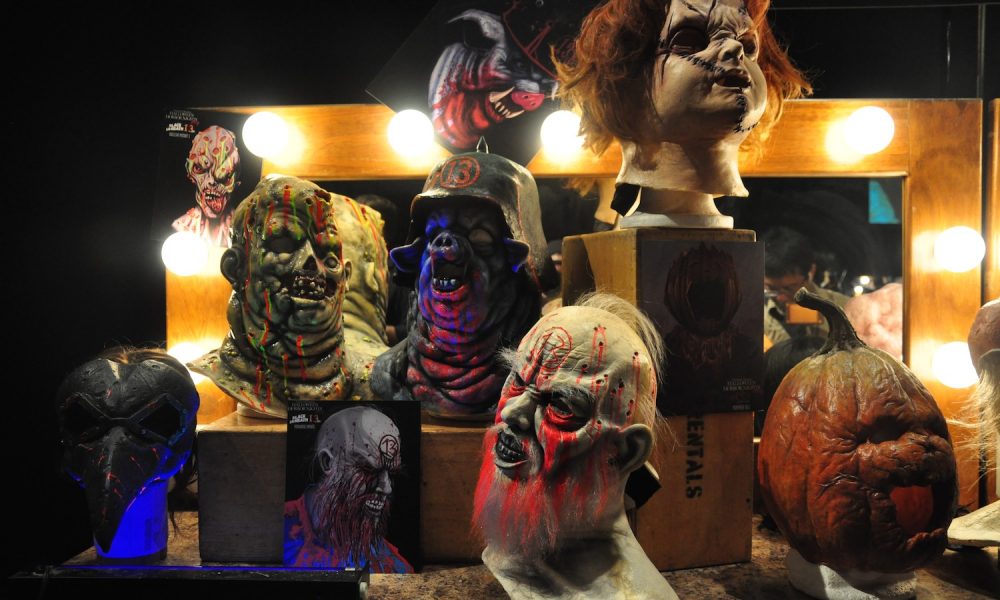Once upon a time, scary costumes were used as a protection to scare off the evil spirits or fairies that may attempt to kidnap you during Halloween. It was believed that the realm of living was accessible to the dead.
Fast forward to the 21st century, where the only scary thing about some Halloween costumes is how offensive and disrespectful they can be.
Every year, many people make poor Halloween costume decisions that turn heads for all the wrong reasons, including some of your favorite celebrities. For example, Julianne Hough dressed in blackface as “Crazy Eyes” from the TV show “Orange is the New Black,” Heidi Klum as the Hindu goddess Kali and Pamela Anderson as a Native American, just to name a few.
Consider this your annual reminder to make the spooktacular outfit you’ve got in mind does not offend or disrespect someone else.
Here is a brief list of examples of inappropriate, cringe-worthy Halloween costumes you should never consider.
1. Blackface and/or racist stereotypes
According to a 2019 Pew Research Center survey, about one in three (34%) Americans say blackface in a Halloween costume is always or sometimes acceptable. Unless you want to raise that percentage of racist Americans, please stay away from blackface.
2. The COVID-19 pandemic
Think twice before you decide to buy that silly germ costume this year. A pandemic that killed over six million people globally is a horrible tragedy that impacted almost everyone’s lives. Making light of tragedies can remind others of the trauma they have endured is not a laughing matter.
3. Cultural stereotypes
As a society, we have come a long way to understand the difference between appreciation and appropriation. Do not dress up as a cultural group. It is that simple. If you need to explain why your costume is not racist or offensive to someone, then it’s time to reconsider your outfit. Some examples include but are not limited to, Native Americans, geishas, voodoo dolls, fortune tellers, Hula girls, Arabian harem girls, belly dancers, a racist caricature of a Mexican person or an Inuk.
4. Mental health
Aside from being offensive and tasteless, seeing a person with a straitjacket is not comical in the slightest. Generally, costumes advertised under this category are based on stigmas surrounding mental health. No more “psychopaths”, “sociopaths” or straitjackets.
5. “Hobo”
The definition of the term hobo is a homeless person and usually a penniless vagabond. Dressing up as someone experiencing extreme poverty is not a cute outfit idea. According to the January 2022 PIT Count, 582,462 people were experiencing homelessness across America. This amounts to roughly 18 out of every 10,000 people.
6. Serial killers
This one is specifically about real serial killers like Jeffrey Dahmer, Ted Bundy, Jack the Ripper and many more. These killers brutalized their victims in unspeakable ways and ruined many lives. It is not a costume, and it glorifies a group of people who are not worthy of any kind of praise or attention. It is insulting to the victims of these people.
7. Anti-LGBTQ
As obvious as this one sounds, every year there is some nonsense costume that gets immense attention, and you guessed it, it’s offensive. You may remember the “Unisex Call me Caitlyn” costume based on Caitlyn Jenner’s Vanity Fair cover. Retailers were forced to take the costume off the shelves after the backlash it received.
8. Sexualized children’s cartoon characters
From Looney Tunes characters to Disney princesses, there is a hypersexualized version of them in costume form. Why is there a need to sexualize a character created for kid’s entertainment?
9. Sexy schoolgirl
School uniforms are generally worn by primary and secondary school students who are still minors. Nothing is sexy about wearing a 12-year-old’s uniform and calling it a costume.
Consider the implications and consequences of these outfits when choosing your costumes this Halloween season.




